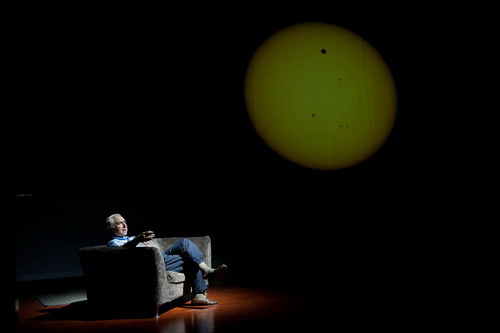
Why is a black dot moving across the sun so important? Astronomer Jay Pasachoff visited the Western Academy of Beijing (WAB) on Monday, August 24 to explain why. WAB’s first speaker in this year’s Distinguished Speaker series, Pasachoff spoke in front of a large audience in Founders Theater about the transit of Venus and what makes this phenomenon so significant.
A few hundred years ago, just after Copernicus’ revolutionary idea that the earth was not the center of the universe, astronomers began competing against each other to uncover the mysteries of our solar system, namely, how big is it? If astronomers could accurately observe and time the transit of Venus across the sun, they could determine not only the length of Venus’ orbit, but (and here’s where you may need to brush upon your geometry) the size of Earth’s orbit, its distance from the sun, and the size of the solar system.
Pasachoff also discussed the Black Drop Effect, an optical phenomenon that makes it difficult to distinguish when exactly Venus makes transit contact with the sun (the exact timing is crucial to making accurate calculations). It had been widely believed that this effect was due to the atmosphere of Venus, but Pasachoff and his colleague Glenn Schneider determined that it was in fact caused by the dimming of the sun around its edges and the inherent blurriness of telescopes.
A reception followed Pasachoff’s talk, during which attendees could pose their questions to the astronomer, who attended some of WAB’s physics classes earlier that day. Pasachoff, who is chair of the Astronomy Department at Williams College, was in Beijing for the General Assembly of the International Astronomer’s Union (IAU). Pasachoff shared an interesting tidbit and about the IAU assembly: they will be voting to change the definition of an astronomical unit (AU), which is currently the approximate distance between the Earth and the sun.
Photo courtesy of WAB



